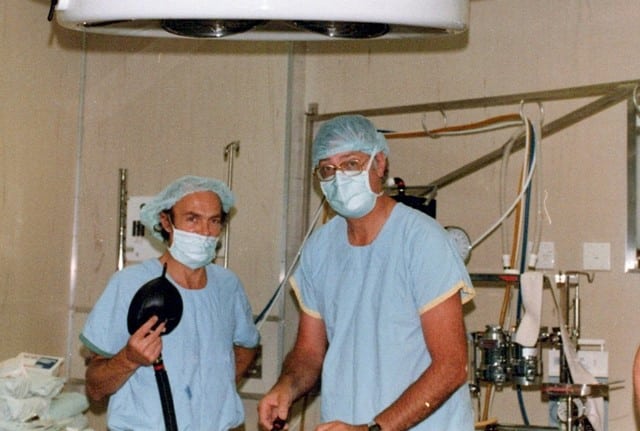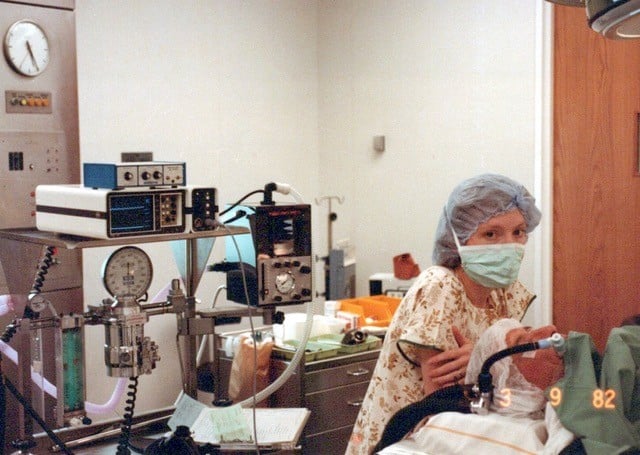This decade saw significant changes in anaesthesia practices, marked by the evolution of anaesthetic agents, equipment sterilisation practices, technological advancements, and shifts in the profession’s demographics and focus.
Guiding Best Practice
The ASA played a crucial role across this decade, guiding anaesthesia practices in Australia. The Society emphasised peer review, continuing education, and professionalism, with a focus on international conferences and subspecialties. This shift in focus helped elevate anaesthesia from being seen as subordinate to surgeons to establishing its influence in areas such as Intensive Care Units and Retrieval Medicine.
Anaesthetic Agents and Induction Practices
During this decade, the standard “GOH” (Gas, Oxygen, Halothane) was replaced by Enflurane due to halothane’s hepatotoxicity concerns. However, Enflurane had drawbacks like EEG epileptiform activity. Isoflurane, introduced in the early 1980s, was seen as an ideal replacement. Thiopentone was the primary induction agent, while Althesin, promising for day surgery, fell out of use due to severe reactions. These changes underscored the need for ongoing research and innovation in anaesthetic practices.
Equipment and Technological Advancements
This decade saw a shift towards disposable equipment. While tubings, masks, endotracheal tubes, and epidural needles were initially cleaned and resterilised, disposable options became increasingly available. However, economic considerations led to the continued reuse of certain items, such as endotracheal tubes in paediatrics. Simultaneously, the evolution of computers began to impact anaesthesia, with computers being used for monitoring, auditing, education, and billing purposes. This technological shift was highlighted in an editorial in Anaesthesia and Intensive Care in 1982, noting the increasing accessibility of computers to anaesthetists.

Anaesthetist and ASA NSW Committee Chair Dr Daryl Salmon (right) in Operating Theatres at Liverpool Hospital Sydney 1981 with anaesthetic technician Cyril Huggins (left).
Demographic Changes
With a fervent focus on education, the number of women in medicine and anaesthesia increased during this period. Australia had a tradition of high-achieving women in anaesthesia, having had Mary Burnell and Patricia McKay as outstanding female anaesthetists, further highlighting the profession’s diversity and excellence.

Anaesthetist Dr Jane McDonald at Liverpool Hospital in 1982.
Written and researched by
Dr Jane McDonald
